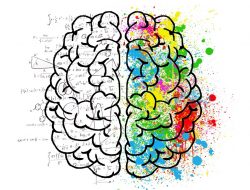
Hypnotherapy
Hypnotherapy is known to be the fastest most powerful therapeutic tool in use today but what is it and how does it work?
Simply put, hypnosis is the state of mind we go in to when in a deep level of relaxation or when we experience an altered consciousness of heightened awareness. When you are in this state of mind, the positive messages you listen to will bypass your conscious mind and go deep into your subconscious mind. By accessing the subconscious you are allowing your mind to change or reprogramme those deep-rooted thinking patterns, to make positive shifts and alter old issues and behaviours once and for all. It’s no wonder then that hypnotherapy is known to be so effective as it goes straight to the source; straight to the location of the problem to ‘fix’ it.
What does it feel like?
We all go in to a state of hypnosis several times a day. If you’re watching TV or reading a really good book and someone is talking to you, but you don’t hear a word they say because you are so focused on what you’re doing – that is a state of hypnosis! It feels just like it does when you’re daydreaming.
In this state of mind, you experience a heightened state of concentration where your mind eliminates distractions allowing you to become much more open to suggestions.
These suggestions empower the mind to activate neural circuits which can activate greater comfort for pain relief, greater mental focus for certain activities, greater self-esteem, more motivation, a sense of calmness and so much more. Hypnotherapy is targeted on what a client specifically wants to focus on and over time the mind will start to change and behaviours will soon follow. How quickly the mind starts to change is totally dependent on the client but many have reported changes immediately after a session whilst others need approximately 4 or 5 sessions to see significant changes.
One of the common misconceptions about hypnosis or hypnotherapy sessions, is that the client feels their actions are compelled, and that they may lose control. This is a fallacy – a client is in full control at all times. A hypnotised person always has full control and no one can control a mind without consent.
What happens to the brain during hypnotherapy?
Hypnosis is thought to work by altering our state of consciousness in such a way that the analytical left-hand side of the brain is turned off, while the non-analytical right-hand side is made more alert.
The conscious control part of the brain in bypassed, and the subconscious mind is awoken. The subconscious part of the brain is the part that needs to change for the clients behaviour, emotions and physical state to alter. For example, a client who consciously wants to overcome their fear of heights may try everything they consciously can to do it, but will still fail as long as their subconscious mind retains this terror and prevents the patient from succeeding. Progress can only be made by reprogramming the subconscious so that deep-seated instincts and beliefs are abolished or altered.
The amagdala (the fight or flight part of the brain) also significantly shrinks and the pre-frontal cortex (associated with higher order brain functions such as awareness, concentration and decision-making) grows, meaning impulsive behaviours lessen and better decisions are made.
How is it relevant today?
Many people use hypnotherapy sessions for all sorts of concerns. At House of Wellbeing, we focus on mental wellbeing for individuals and to employees in the workplace. When it comes to hypnotherapy to enhance wellbeing in the workplace, we offer businesses the opportunity to be a better, stronger and healthier workforce enabling employees to achieve more by eliminating unwanted beliefs and behaviours.
Three out of five employees (61%) have experienced mental health issues due to work or where they felt work was a related factor. 30% of managers have reported not currently having any workplace facilities or services that could help wellbeing and 49% of employees when they reported experiencing a mental health issue, said that there had been no changes or action taken. This has resulted in a staggering 300,000 people with a mental health problem leaving their jobs every year.
The House of Wellbeing platform targets exactly what it is employees need to change quickly and effectively to make permanent changes to becoming a happier, more efficient, productive and motivated individual. The platform has been tried and tested with significant results: Within just 4 sessions, 78% of employees find that stress is reduced, focus is increased and overall positive attitude and motivation is increased.By listening to our MindTALKS (hypnotherapy audios), we believe the workplace can be a force for positive change, supporting employees in their mental wellbeing journeys and in turn doing better business.
Our hypnotherapy audios are also available for individuals to listen to through our platform or app. For some, it can be difficult to get to a face to face hypnotherapy session or perhaps you simply want to be able to reap the benefits of hypnotherapy sessions at home in your own time. Our library of hypnotherapy audios are accessible to you 24/7 simply by subscribing to our app. If you want to make some changes to your thinking, feeling and behaviour then now is the time to harness the power of your mind.

